A machine learning-derived angiogenesis signature for clinical prognosis and immunotherapy guidance in colon adenocarcinoma
- PMID: 40450107
- PMCID: PMC12126557
- DOI: 10.1038/s41598-025-03920-w
A machine learning-derived angiogenesis signature for clinical prognosis and immunotherapy guidance in colon adenocarcinoma
Abstract
Colon adenocarcinoma (COAD) is one of the most prevalent malignancies worldwide and its prognosis is extremely poor. Angiogenesis has been linked to clinical outcomes, tumor progression, and treatment sensitivity. However, the role of angiogenesis in the COAD microenvironment and its interaction with immunotherapy remains unclear. In this study, an integrative machine learning approach, including ten algorithms, was used to construct a prognostic consensus angiogenesis-related signature (CARS) for COAD. The optimal CARS constructed using the RSF + StepCox [forward] algorithm had superior performance for clinical prognostic prediction and served as an independent risk predictor for COAD. Patients in the low-CARS group, characterized by immune activation, elevated tumor mutation/neoantigen burden, and greater responsiveness to immunotherapy, had a superior prognosis. Patients in the high-CARS group exhibited a poor prognosis with higher angiogenesis activity and immunosuppressive status, indicating lower immunotherapy benefits. However, axitinib and olaparib may be promising treatment options for such patients. Taken together, we constructed a prognostic CARS that provides prognostic stratification and elucidates the characteristics of the tumor microenvironment, which might guide the selection of personalized treatments for patients with COAD.
Keywords: Angiogenesis; Colon adenocarcinoma; Immunotherapy; Machine learning; Single cell RNA-seq; Tumor microenvironment.
© 2025. The Author(s).
Conflict of interest statement
Declarations. Competing interests: The authors declare no competing interests.
Figures

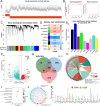
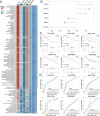
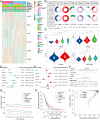
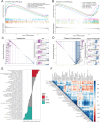

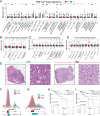
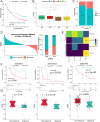

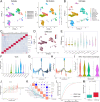
Similar articles
-
A gene signature related to programmed cell death to predict immunotherapy response and prognosis in colon adenocarcinoma.PeerJ. 2025 Feb 10;13:e18895. doi: 10.7717/peerj.18895. eCollection 2025. PeerJ. 2025. PMID: 39950044 Free PMC article.
-
Investigating gene signatures associated with immunity in colon adenocarcinoma to predict the immunotherapy effectiveness using NFM and WGCNA algorithms.Aging (Albany NY). 2024 May 13;16(9):7596-7621. doi: 10.18632/aging.205763. Epub 2024 May 13. Aging (Albany NY). 2024. PMID: 38742936 Free PMC article.
-
Developing a RiskScore Model based on Angiogenesis-related lncRNAs for Colon Adenocarcinoma Prognostic Prediction.Curr Med Chem. 2024;31(17):2449-2466. doi: 10.2174/0109298673277243231108071620. Curr Med Chem. 2024. PMID: 37961859
-
Focusing on DC cells to optimize the prediction of prognosis and innovative treatment strategies for colon cancer.Sci Rep. 2025 May 19;15(1):17298. doi: 10.1038/s41598-025-01792-8. Sci Rep. 2025. PMID: 40389562 Free PMC article.
-
Cell Senescence-Related Genes as Biomarkers for Prognosis and Immunotherapeutic Response in Colon Cancer.Biochem Genet. 2025 Feb;63(1):124-143. doi: 10.1007/s10528-024-10690-z. Epub 2024 Feb 27. Biochem Genet. 2025. PMID: 38411939
References
-
- Sung, H. et al. Global Cancer statistics 2020: GLOBOCAN estimates of incidence and mortality worldwide for 36 cancers in 185 countries. CA Cancer J. Clin.71, 209–249. 10.3322/caac.21660 (2021). - PubMed
-
- Siegel, R. L., Giaquinto, A. N. & Jemal, A. Cancer statistics, 2024. CA Cancer J. Clin.74, 12–49. 10.3322/caac.21820 (2024). - PubMed
-
- Siegel, R. L. et al. Colorectal cancer statistics, 2020. CA Cancer J. Clin.70, 145–164. 10.3322/caac.21601 (2020). - PubMed
-
- Dekker, E., Tanis, P. J., Vleugels, J. L. A., Kasi, P. M. & Wallace, M. B. Colorectal cancer. Lancet394, 1467–1480. 10.1016/s0140-6736(19)32319-0 (2019). - PubMed
MeSH terms
Substances
LinkOut - more resources
Full Text Sources

